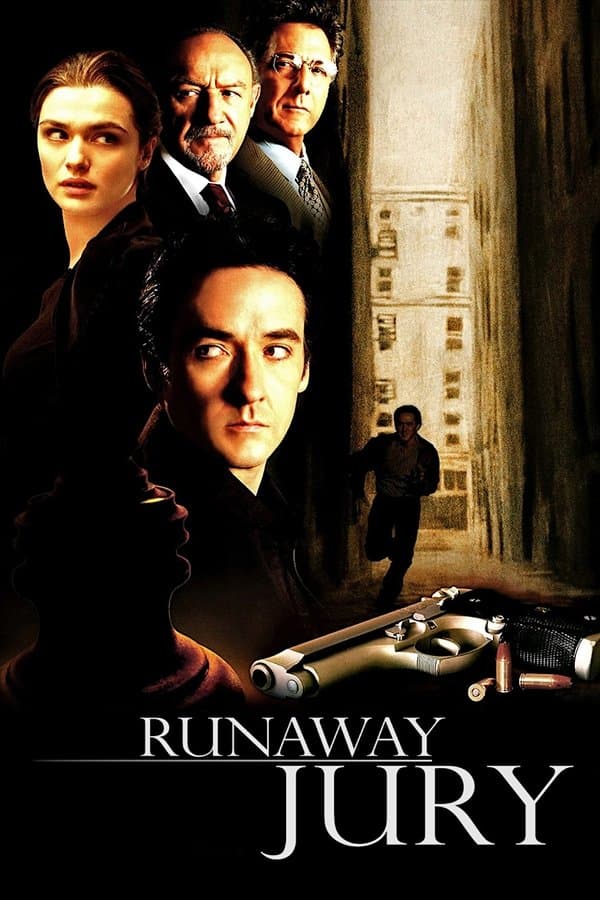
Runaway Jury
2003 • Drama, Thriller • PG-13
After a workplace shooting in New Orleans, a trial against the gun manufacturer pits lawyer Wendell Rohr against shady jury consultant Rankin Fitch, who uses illegal means to stack the jury with people sympathetic to the defense. But when juror Nicholas Easter and his girlfriend Marlee reveal their ability to sway the jury into delivering any verdict they want, a high-stakes cat-and-mouse game begins.
Runtime: 2h 7m
Why you should read the novel
If you’re captivated by intricate legal maneuvering and the subtle art of psychological gamesmanship, reading John Grisham’s 'The Runaway Jury' will immerse you much deeper than the movie adaptation ever could. The novel skillfully unravels the complex motives of its characters, providing backstories, inner thoughts, and ethical quandaries that are necessarily condensed or omitted on screen.
On the page, Grisham’s attention to detail and understanding of the legal system bring to life the tension in the courtroom, making you feel like a fly on the wall during every secretive discussion and dramatic reveal. The slow build of suspense allows you to savor each twist and unravel each strategy piece by piece.
Choosing the book over the movie also allows you to appreciate Grisham’s commentary on the influence of industry, the corruption of justice, and the lengths to which ordinary people will go for both money and morality. It’s a riveting read for anyone fascinated by human nature, justice, and power.
Adaptation differences
One of the most striking differences between 'The Runaway Jury' novel and its film adaptation is the industry on trial. In the book, the case revolves around a lawsuit against the tobacco industry, capturing the intense public controversy of Big Tobacco versus victims of lung cancer. However, the film changes this to a lawsuit against a gun manufacturer, shifting the political focus and context to gun violence in America.
The characters see notable changes as well. In particular, the backgrounds, motivations, and even some of the names are altered to fit the film’s new context. For instance, in the novel, the lead lawyer and jury consultant represent tobacco interests, while in the movie, they represent the gun industry. These adjustments create different stakes and social commentaries between book and film.
Another main difference is how each medium handles the manipulations within the jury. The book delves much deeper into the intricate psychological ploys, friendships, and betrayals among the jurors, painting a more nuanced portrait of how a jury can be influenced. The movie, by necessity of time and focus, streamlines these subplots and relationships, losing some of the complexity found in the novel.
Finally, the resolution and motivations behind the actions of the main characters are handled differently. The novel provides detailed accounts of the protagonists’ backgrounds and ultimate motives for manipulating the jury’s outcome, offering a richer, more morally ambiguous narrative. The movie simplifies several elements to provide a more conventional sense of justice, making for a different thematic message overall.
Runaway Jury inspired from
The Runaway Jury
by John Grisham











